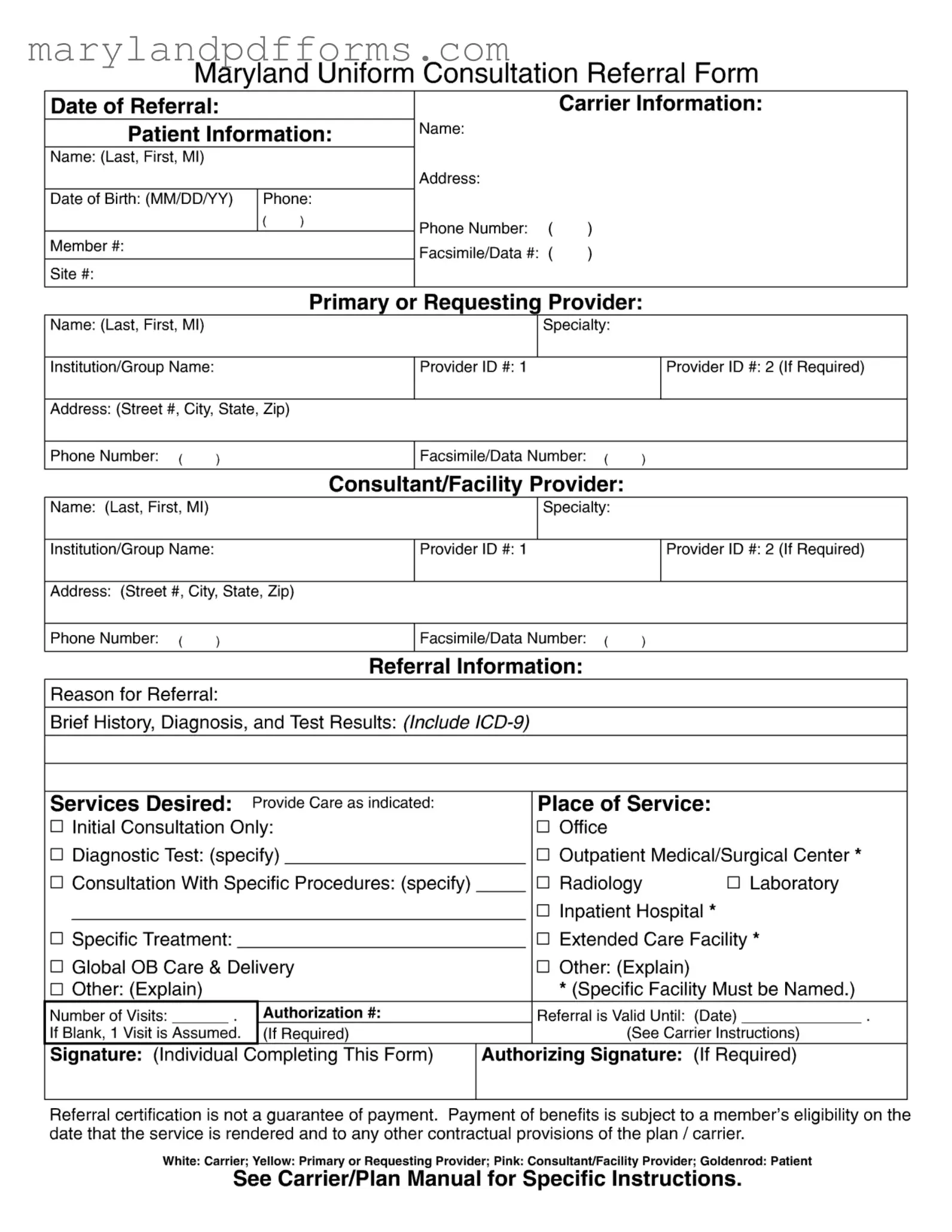The Maryland Referral Form is a document used by healthcare providers to refer patients to specialists or other facilities for additional care. It ensures that all necessary information is communicated clearly, helping to facilitate the patient's treatment process. The form captures essential details about the patient, the referring provider, and the consultant or facility provider, streamlining the referral process.
When filling out the Maryland Referral Form, you will need to provide the following information:
-
Date of referral
-
Carrier information
-
Patient information, including name, date of birth, and contact details
-
Primary or requesting provider details, such as name, specialty, and provider ID
-
Consultant or facility provider information
-
Reason for referral and any relevant medical history
-
Services desired and place of service
-
Authorization details, if required
Completing all sections accurately helps ensure the referral is processed smoothly.
The form should be completed by the primary or requesting provider who is referring the patient. This provider is responsible for ensuring that all necessary information is included and that the form is submitted to the appropriate consultant or facility provider.
How long is the referral valid?
The referral is valid until the specified date indicated on the form. If no date is provided, it is assumed that the referral is valid for one visit. It is important to check with the carrier’s instructions to understand any specific validity periods that may apply.
What if I do not have an authorization number?
If you do not have an authorization number, you can leave that section blank. In this case, it is assumed that the referral is for one visit. However, it is advisable to confirm with the patient's insurance carrier to ensure that all necessary authorizations are in place for the services being requested.
What should I do if the referral is not approved?
If the referral is not approved, the patient or the referring provider should contact the insurance carrier for clarification. It may be necessary to provide additional information or documentation to support the referral request. Understanding the reasons for denial can help address any issues and improve the chances of approval in the future.
While the Maryland Referral Form is designed for a variety of referrals, it is essential to ensure that it meets the specific requirements of the patient's insurance plan. Some plans may have their own referral forms or additional documentation requirements. Always check the carrier's instructions to confirm compliance.
Is the referral certification a guarantee of payment?
No, referral certification does not guarantee payment. Payment of benefits is contingent upon the member's eligibility on the date services are rendered and any other contractual provisions of the insurance plan. It is crucial for both providers and patients to understand this to avoid unexpected costs.
